
JaneApp Data Security Features: How Your Clinic’s Information Stays Protected
JaneApp Data Security Features: How Your Clinic’s Information Stays Protected Takeaways Jane is HIPAA- and PIPEDA- compliant Data is encrypted, whether at rest or in
Start Feeling Better In As Few As 3 Visits.
When you’re in pain, all you want to do is feel better. The problem these days is, most of the treatment options doctors offer involve some kind of over-the-counter or prescription drug. And as we’ve learned the hard way, some of these drugs become addictive, leading to great suffering in many cases. Acupuncture treatments provided in physiotherapy offers a non-drug alternative path to pain relief.
Acupuncture has proven itself effective in clinical trials, some of which we’ll discuss in a moment, and it is an approved treatment for concerns related to injury, pain, swelling, or stiffness.
When combined with other interventions in physiotherapy like exercise prescription, acupuncture offers patients an effective intervention in helping you recover and getting you back to the activities you want to do.
Let’s take a deep dive into acupuncture treatments provided by physiotherapists.
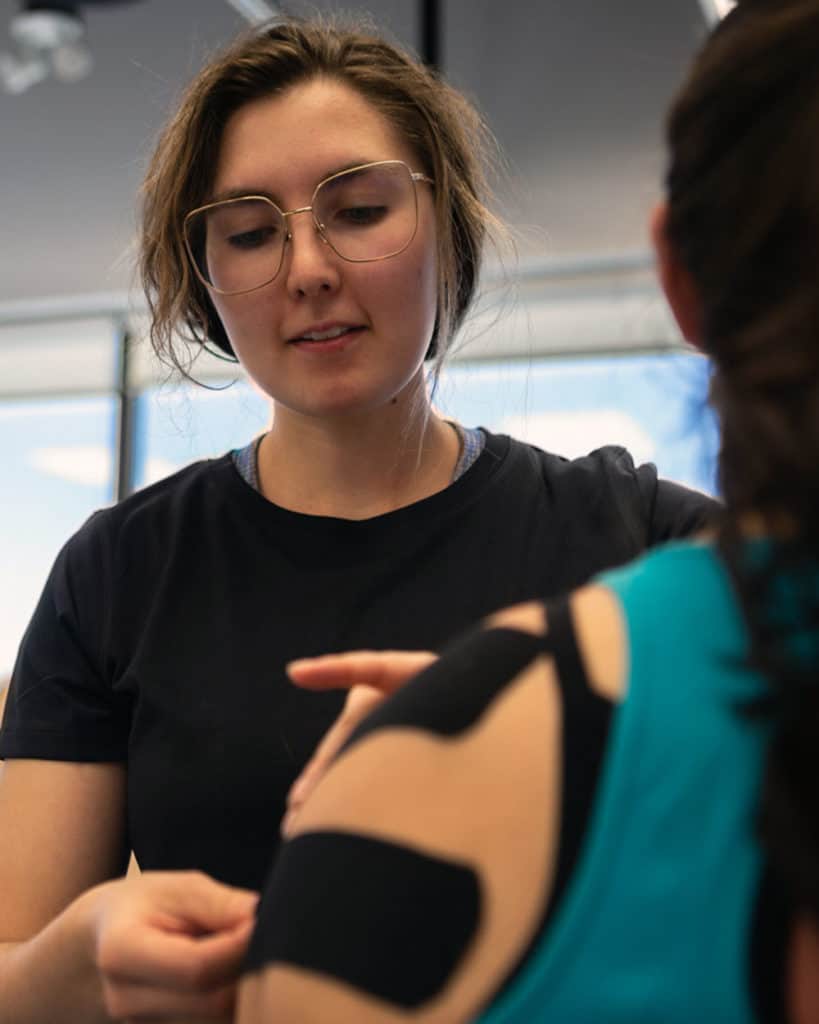
Tell us what hurts, and we will treat your pain in the shortest time possible. Get effective treatment for your condition in less than 30 minutes so you can get back to doing what you live… pain-free.
Get a personalized care plan so you can feel better in as few as 3 visits. We use advanced therapy techniques proven to ease pain, accelerate recovery, improve mobility and overall health.
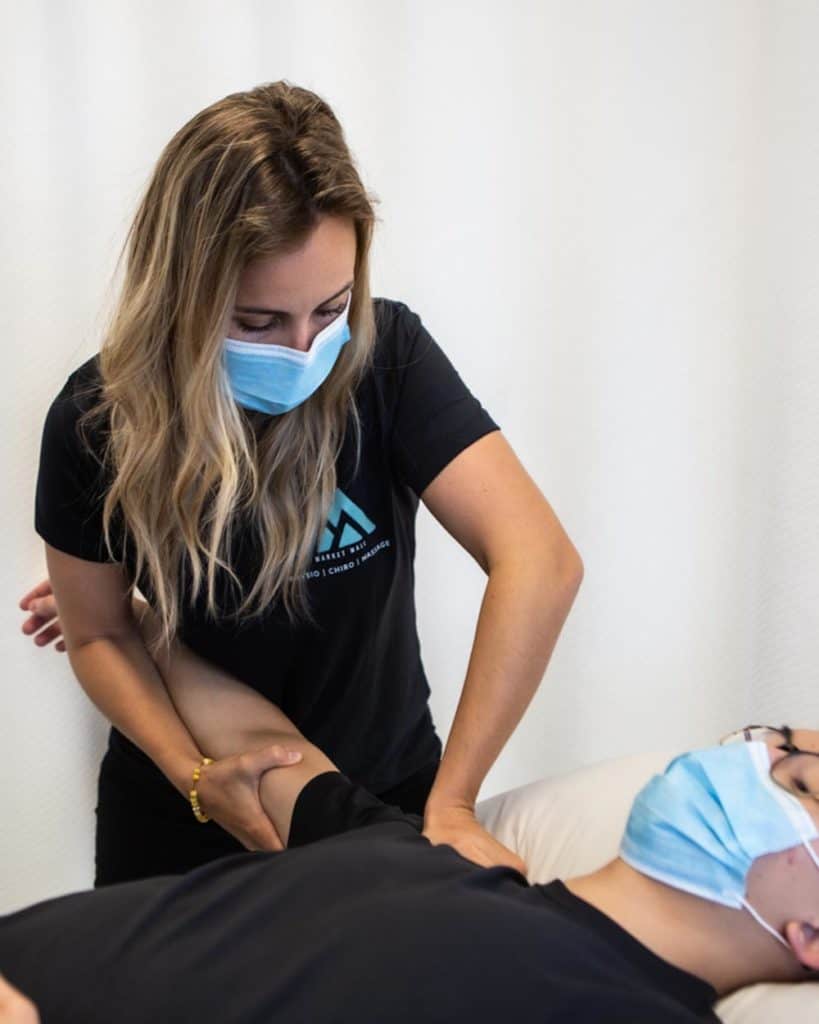
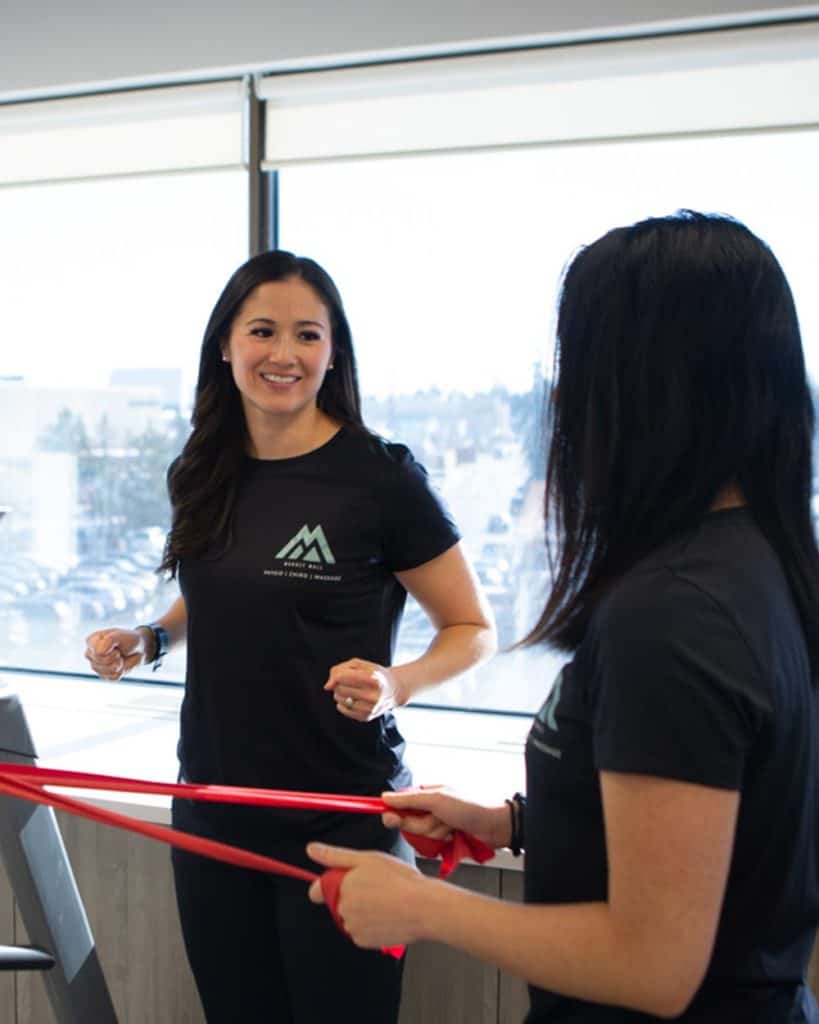
Our team of licensed physiotherapists, chiropractors, registered massage therapists are professionals and in human anatomy and biomechanics. You will get the perfect care plan to target the root of your pain so you can get back to doing what you love, everyday!
This appointment is your opportunity to tell us what hurts and discover whether physiotherapy is a good fit for you! During this session, you will talk with a physiotherapist on a phone call (or online) and create the right care plan specifically for your pain. There is no obligation, this session is only to find out if physiotherapy can help you getting back to doing the things you love in life.
If you’re like most you don’t want to wait days or weeks to get treated for your pain. And you don’t want to have to spend your time calling nearby clinics to find the one who can see you the fastest.
That’s where PainHero comes In – Canada’s largest network of physiotherapists, chiropractors, and registered massage therapists.
Our Platform is used by clinics where they post their open appointment times. So you can quickly compare availability and wait times for clinics near you without having to pick up the phone. Then book an appointment within seconds and even see someone that day if you want. So you can get back to doing the things you love faster.
Plus unlike other sites who let anyone on or just rely on google reviews. We hand pick clinics based on a 50-point inspection, which includes everything from checking reviews, ratings, reputation, history, complaints, satisfaction, trust, cost, and general excellence.
Improve the way your body moves so you can continue to do the things you love. PainHero is Canada’s largest network of physiotherapists, chiropractors, and registered massage therapists. Our mission is to make it easy for you to find the top clinics in your community. We handpick the top clinics using our 50 point inspection based on patient reviews, complaints, and patient outcomes.
Whether you’re seeking pain relief or preventative care, you can expect our patient-centric approach to be new and different from any healthcare experience you’ve had before. Perhaps even life-changing.
1460+
Clinics
2172+
Caring Therapists
2M+
Patient Visits
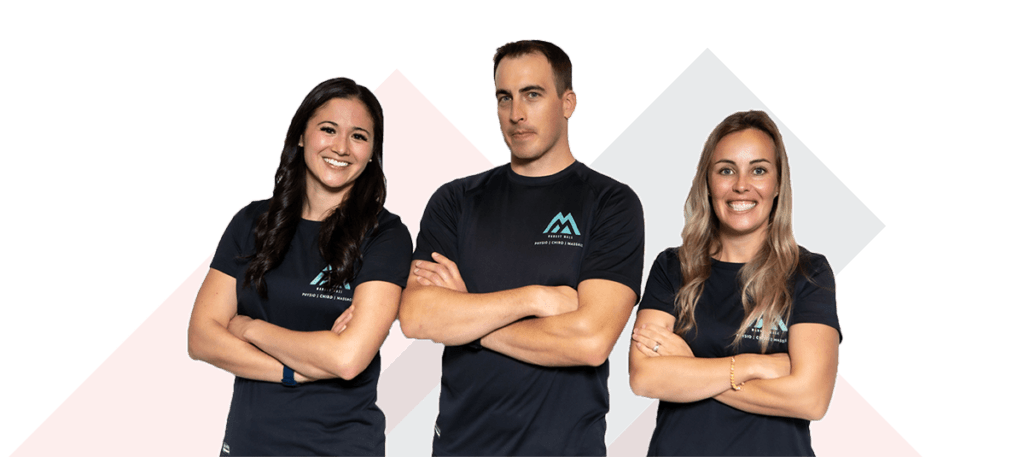
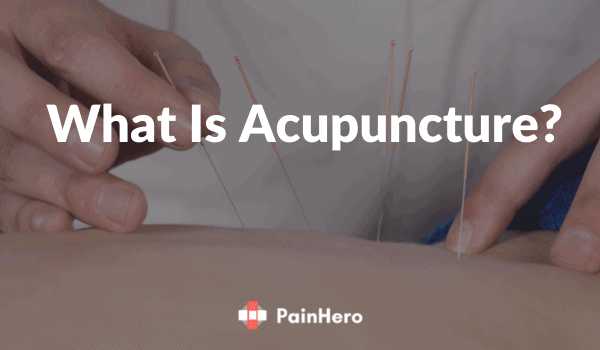
Acupuncture represents the rare example of a traditional form of medicine that has gained approval and acceptance by mainstream western medical science.
Why? Because while the all of the traditional theories and principles behind acupuncture have not been verified by science, its effect on the nervous system has been captured in scientific research. In other words – we know it can be helpful, we just don’t know all the specific reasons why.
Acupuncture that is provided by physiotherapists is based on Traditional Chinese Medicine (TCM). It is an alternative approach to pain relief and is based on the traditional belief in a life force energy known as Qi (pronounced ‘chee’). The belief in TCM is that this energy flows along meridian lines that run throughout the body, and that if you place needles along these lines at specific points depending on the patient’s condition, you will stimulate the body in its recovery.
The scientific explanation for this is that the thin needles stimulate points along the body that cause an interaction with the autonomic nervous system (ANS). The ANS is the part of your body’s nervous system that helps you regulate a state of balance, or homeostasis.
You may have heard of the fight or flight response (sympathetic)? or the Rest and Digest response (parasympathetic)? The stimulation from the needle creates a rush of neurohormones that signals your body to re-balance these states of sympathetic and parasympathetic states. This can help reduce your pain.
Check out this post to learn more about Acupuncture courtesy of Ottawa Physiotherapy and Sport Clinics (Read the caption)

Acupuncture in physiotherapy can treat a great variety of conditions. Some have been studied by scientists more than others, which is why most medical doctors will say that acupuncture is a viable option for a complimentary treatment to medical management.
Some ailments acupuncture can treat include:
That’s quite a list, and it could be longer. The underlying commonality here, if you didn’t pick up on it, is pain.
Activate the stubborn muscles with stimulated acupuncture or dry needling techniques courtesy of Sporting Edge Physiotherapy (Read the caption)
Find out whether physiotherapy can help you get back to doing the things you love in life.
There are certain musculoskeletal conditions that tend to respond well with acupuncture in physiotherapy. Whether chronic or acute, general or specific, learn about how acupuncture can assist in the recovery of these common problems:
This injury is not just for tennis players. This is a common injury in hard-working labourers like construction workers and can also affect those with repetitive jobs like desk work or assembly. Patients typically experience pain with gripping tasks, especially when trying to pour coffee or lift a jug of milk out of the fridge.
Clinically, we see patients respond well to acupuncture treatments for tennis elbow. This can help with short-term pain relief which will help you better participate in your rehabilitation exercises, and also let you recognize that your pain can change and that your body is capable of recovery.
Stress, local trauma, dental work, and postural changes can all contribute to TMD. This condition is described as pain, tension, clicking, or locking (or a combination of those listed) at the jaw. Especially during the global pandemic, extra stress and mask wearing may be contributing to more noticeable symptoms of TMD.
There are helpful points at the face and jaw that can help calm down the nerves, decrease muscle tension, and free up the movement in the TMJ. Alongside stress reduction strategies, exercises, and behaviour modification, acupuncture is a helpful additional treatment to TMD.
Stiff and painful joints keeping you from enjoying your life? Difficulties getting your leg up to tie your shoes or reaching above your head?
Acupuncture can be helpful for decreasing pain during an acute flareup or for relieiving the chronic pain secondary to muscle guarding that is associated with osteoarthritis. Alongside a strengthening and regular exercise program provided by your physiotherapist, acupuncture can allow you to feel pain relief and less stiffness so you can move better in your day.
This is a very complex and unfortunately not well known condition. Although there are many factors that contribute to this condition a common characteristic is persistent pain. Acupuncture can help in the management of persistent pain conditions like Fibromyalgia. Although the evidence to support its effectiveness is mixed, when used alongside active strategies discussed with your physiotherapist, many patients do find it helpful in their management plan.
Migraines and Headaches
Migraines have been studied with regard to acupuncture possibly more than any other ailment. Many headache symptoms or worsening migraines can be triggered by an increase in muscle tension, nerve irritability, or stress. Therefore, acupuncture can be helpful for decreasing the severity, irritability, and occurrence of your headaches or migraines.
Acupuncture treatment courtesy of MVMT Physio & Chiro (Read the caption)

Many studies have been conducted to determine if acupuncture works, and if so, how well. As mentioned at the start of this article, the research isn’t conclusive on how acupuncture helps. However, clinically it does shows its effectiveness. In the studies that have been completed, here is some research we found:
Quite a few studies have sought to determine if acupuncture has an effect on migraines. In a Cochrane Review of 22 studies, it has been proven to be helpful in preventing migraines.
When studied as a treatment option for people with migraines, there was a small difference in improvement of an acupuncture group when compared to a medication group.
Another study found some benefits for those with fibromyalgia. Acupuncture treatment, especially when combined with electrostimulation, appears to be helpful with overall pain and fatigue with regular treatments.
Overall, the research available for the effectiveness of acupuncture for specific conditions is low. However, with years of using this practice to help alleviate pain conditions and help the body in recovery from injury, many practitioners have found it has been helpful for their patients. This is one of the reasons why physiotherapists will use acupuncture in combination with other treatments and interventions.
How Does Acupuncture Work?
There are different hypotheses on how acupuncture benefits people. Here are a few of the most accepted ideas:
One of the ideas is that it stimulates a neurohormone response in the body. By stimulating the nerves it releases naturally occurring neurochemicals that travel through the nerve and up to the brain to cause a reduction in pain.
The second idea is that the stimulation from acupuncture signals your body to clear the pro-inflammatory markers that exist with an injury. A decrease in pro-inflammatory markers can have a direct effect on reducing pain caused by inflammation.
Another theory that is possible is the placebo effect which can happen with any intervention you use for pain. A placebo effect is when other factors like the environment or patient specific expectations play a part in the overall pain relieving benefits of a treatment.
Again, these are all just theories about why and how acupuncture works. They attempt to explain the scientific basis for the Traditional Chinese Medicine that seems to work well at relieving pain and promoting self-healing for a variety of conditions.
Check out this post to learn more how acupuncture works courtesy of Waterview Physiotherapy & Health Centre (Read the caption)

What can you expect to feel after undergoing a few acupuncture treatments provided by your physiotherapist? Here are five of the most commonly experienced effects that patients find benefits from.
Pain Relief
Patients can experience pain relief either after their first treatment or after a few treatments. The potential neurohormone effect can decrease in inflammation and can decrease pain.
Stress Relief
Acupuncture is relaxing. It allows you to take the time for yourself to care for your needs. A treatment is typically 15-30 minutes long and gives you the time you need to relax while the treatment takes effect. Remember the PNS and SNS response? Stimulating the body with acupuncture is one way to help the body switch to a balanced PNS and SNS, which can help with stress management.
Reduces Muscular Tension
Whether you’re feeling tension in your neck, back, shoulder, jaw, or other joints or muscles throughout your body, acupuncture physiotherapy will likely lead to lasting reduced tension. You’ll also increase your ability to move freely as your muscular health improves.
Decrease Swelling
With a reduction in pro-inflammatory markers and helping your body balance a more parasympathetic state, acupuncture can help decrease swelling and improve circulation around an injury.
Tissue Healing
In the traditional approach to acupuncture, practitioners describe an overall improvement in the body’s ability to heal with an injury. By restoring the balance in energy flow (nervous system response) it allows the body to heal optimally from an injury.
In addition to all these benefits, you may be able to decrease or eliminate the need for various painkilling drugs and opioids. This will help you feel empowered and supported throughout your healing journey.
When you arrive for your physiotherapy treatment, your appointment will still look very similar to a general physiotherapy assessment. Your practitioner will take a thorough history and complete a physical assessment with you.
Once your acupuncture-trained physiotherapist assesses your condition they will explain how they think acupuncture may help you. All the potential risks and benefits will be explained to you. They will also describe other interventions like movements throughout your day and exercise to continue to help your condition.
For the acupuncture treatment they will map out all the locations where they will insert the needles. They may swab each area with alcohol and will then insert one needle at a time.
For each needle placement, they will gently tap the needle into your skin and then insert it slightly deeper. It won’t go very far into your skin, and you will barely feel it. How many needles are used, and where they are placed depends on the condition the physiotherapist is treating.
The needles will typically stay in for 15-30 minutes. Sometimes electrical stimulation may be applied to the needles, if indicated, to produce further effects.
The whole experience is mild and you will likely feel little to nothing. For some conditions, you will want to attend multiple sessions for benefits.
It’s fairly easy to confuse acupuncture physiotherapy with intramuscular stimulation (IMS) because both use dry needling. But there are actually more differences than similarities. IMS needling serves a different purpose than acupuncture, uses different methods, and results in different outcomes and side effects.
Both can be used in conjunction with physiotherapy, and in truth most IMS physiotherapy practitioners use IMS needling as just one of the many treatments available to them depending on the needs of their patient.
Let’s take a look at seven major differences between acupuncture and IMS therapy.
In traditional acupuncture, once the needles are inserted into the body they typically remain undisturbed for the duration of the treatment. But in IMS therapy the needles are manipulated by the physio to produce a muscle contraction.
Learn the difference between dry needling, IMS and acupuncture, courtesy of Lime Health and Wellness
2. Different Diagnosis Methods
Acupuncture is based on ancient theories about meridians (as explained above), and this determines needle placement, length and number of treatments, and other factors depending on your condition. IMS needling attempts to locate specific nerves and muscles being impaired that are contributing to your symptoms.
As the last point suggests, an IMS physio will attempt to target specific muscles, all depending on your condition. For example, if you have shoulder pain the IMS physiotherapist will likely insert the needle into your shoulder muscles because that is the area being treated.
Traditional acupuncture practitioners, on the other hand, may target a few spots around the shoulder muscle as well as other non-local points because the needle placement is pursuing a different goal. These non-local points may help activate different parts of your nervous system such as the rest and digest system.
In general, acupuncture needles will not be inserted as far as the needles in IMS therapy. The reason again has to do with the purpose. With IMS needling, therapists want to stimulate your muscles and nerves. To do that, they have to go deep enough to get a reaction from the muscle. With acupuncture, the depths are pre-determined and typically do not need to be as deep to accomplish the goal.
Acupuncture generally lasts quite a bit longer than IMS physiotherapy. Most IMS needling sessions last for just a few minutes, because once the muscles and nerves have been properly stimulated the treatment is done.
Acupuncture will typically last 15-30 minutes, but can go as long as an hour in some cases.
Dry needling IMS is a more ‘invasive’ procedure for the reasons you’ve already seen, and it does produce some soreness that can last a day or two. You will feel it. Acupuncture tends to produce little to no soreness. Most patients report none at all!
As mentioned earlier, acupuncture is not based on western science. While science has demonstrated the effectiveness of acupuncture physiotherapy to treat multiple conditions like those you saw in the referenced studies, the technique itself was not developed by modern science. It’s been around for thousands of years, before science as we practice it today even existed.
IMS physiotherapy was developed in the 1970s, and is based on scientific understandings of biology, muscle health, the nervous system, and other elements of human physiology.
For an in-depth exploration of IMS physiotherapy as a form of dry needling physio, read the ultimate guide to IMS treatment.

JaneApp Data Security Features: How Your Clinic’s Information Stays Protected Takeaways Jane is HIPAA- and PIPEDA- compliant Data is encrypted, whether at rest or in
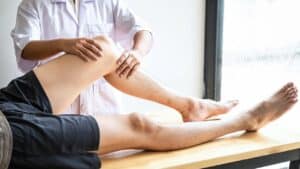
JaneApp Reporting and Analytics: How Clinics Can Track Growth and Performance Takeaways Jane’s reports are super underrated, they give you real insight into how your
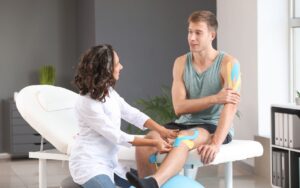
JaneApp Customer Support: How to Get the Help Your Clinic Needs Takeaways Use the in-app chat first if you can Email is fine, but be
You’ll begin by talking about your health history. Next, the physiotherapist will examine your movements and perform some additional tests so they can determine the proper treatment plan for your condition.
For the treatment, you will lay on a comfortable table while the therapist targets specific points on your body, based on your assessment. The fine dry needles are inserted at these targeted points, and most people barely feel them. They stay in your body between 15 and 30 minutes. The needles are sterile, used only once, and are disposed of safely in a sharps container once treatment is complete.
The frequency and number of treatments depends on each person’s condition and the complexity of their injury. Most people need about 3 treatments to feel a difference, however there can be dramatic relief after just one treatment. For complex or long-standing chronic conditions, it often takes one or two treatments per week for several weeks, and sometimes months. Usually, acute problems require fewer visits.
Your licensed physiotherapist will develop an individual treatment plan that includes the expected number of treatments, which will be discussed during your initial visit.
During and after treatments, most people report a feeling of relaxation. Some feel very tired, because the body has undergone some significant changes and needs to rest. If there is soreness where the needle was inserted the physiotherapist will discuss best ways to manage the soreness post-treatment.
Because the goal is a holistic approach to your concerns, your physiotherapist may use additional tools and approaches, such as:
Acupuncture is one of several possible methods for relieving pain that do not rely on prescription medications and all the side effects and baggage they come with. Not to mention that most drugs can only mask pain, but rarely address root causes. Find a clinic if you are suffering from muscle tightness, soreness, or pain to improve your quality of life, today.
